A: access signs
1: white oak sign
2: bur oak sign
3: dedication to Moe Anderson
4: red oak sign
5: white pine sign
The trail is maintained by National Capital Commission volunteers. The signs, made in Y2K, are to be redone in 2015 by the NCC.
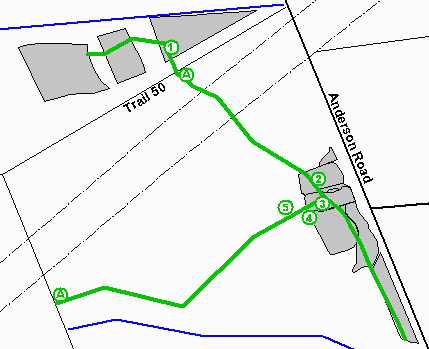
| main nut plantations are shaded grey
A: access signs 1: white oak sign 2: bur oak sign 3: dedication to Moe Anderson 4: red oak sign 5: white pine sign The trail is maintained by National Capital Commission volunteers. The signs, made in Y2K, are to be redone in 2015 by the NCC. | 
|
| The Dolman Ridge was a sand bar in the Ottawa River of 10 000 years ago.
The bed of the river was solid clay laid down by the glacial Champlain Sea.
For about a hundred years, until the 1960's, the area was mostly plowed farmland. The west end of the trail, on the sand ridge, passes through trees that were left along the edges of farmers' fields and spread rapidly by windblown seeds, primarily birch and red maple. | 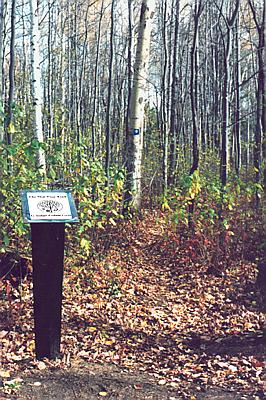
|
| Feeding chickadees and red squirrels is a popular pursuit of visitors to the Dolman ridge. Feel free to bring some seed for them. | 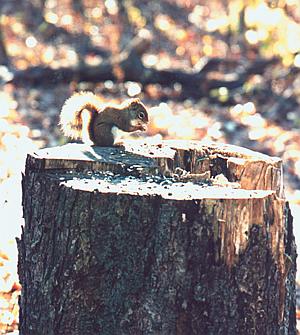
|
| Fungi are an essential part of forest ecology. They recycle old trees into nutrients for new ones. Since this forest is so young, there are few places where you can see them in action. Everything cleared for the trail was placed on the forest floor near by, to promote a healthy forest ecology for the future. | 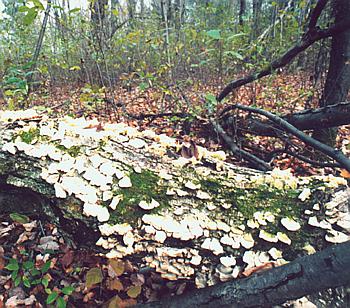
|
| Club mosses, such as these Lycopodium obscurum found along the trail, appeared on earth 400 million years ago, long before the seed trees you see around them. | 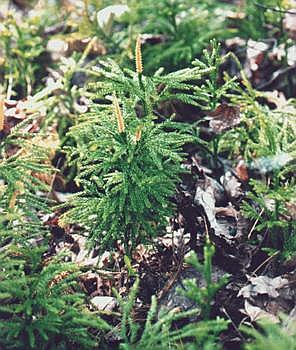
|
| After a heavy rain, the woods are very wet for a week or so. | 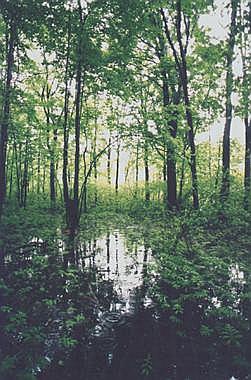
|
| 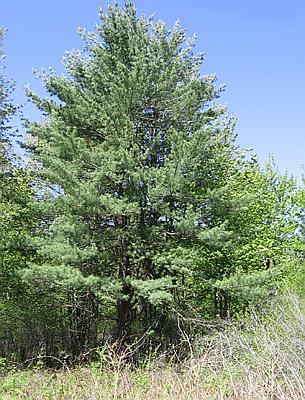
| This tree died, so the sign has been moved to a grove of pines on Trail 50. |
These red oaks are showing exceptional timber production. | 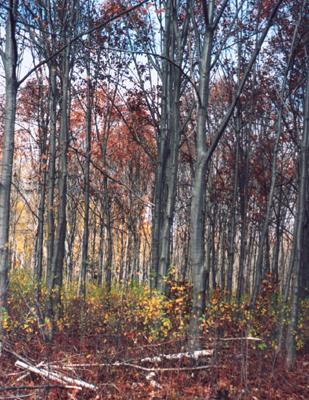
|
| 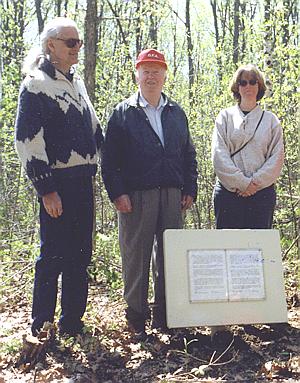
|
The bur oak on the ridge are beginning to thin themselves. In another 20 years, there will be successful trees at an average of 6 m spacing; the smaller trees will lose the battle for survival. | 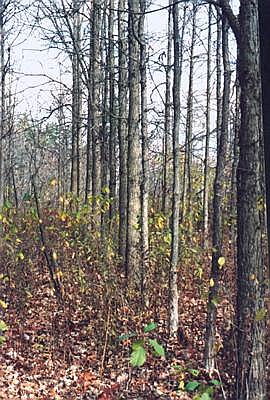
|
| From the hill, a reminder that the site is in the middle of a modern city. This area is periodically destroyed by hydro crews, and is then left to recover from roots and seeds. | 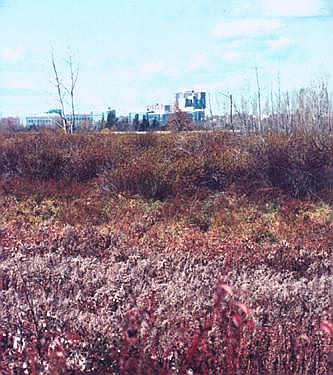
|
| The base of the hill is very damp, and kept cleared for the hydro lines overhead. Clayton's fern, field and wood horsetail, and wet meadow flowers can always be found here. | 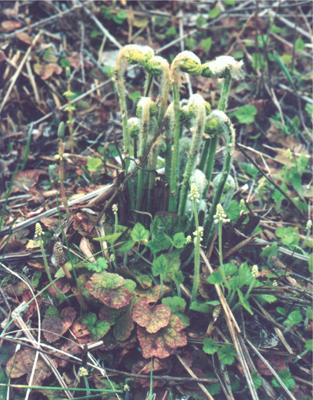
|
| One of the few cedars not cut for fencing and a bridge mark the north access to the trail where it crosses an old farming road. | 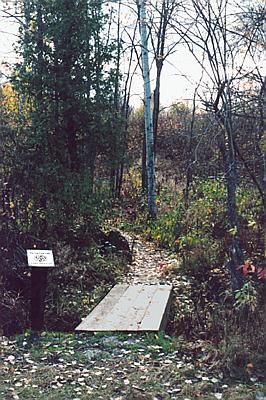
|
Many of the white oak in this area have been eaten to shrub height by voles for the last 20 years. Protective sleeves are being used over winters until their bark grows thick enough to withstand vole girdling. | 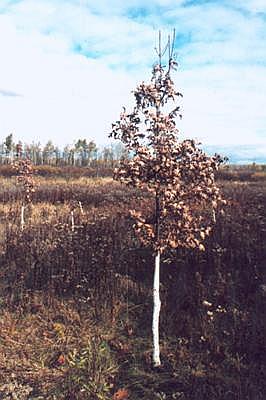
|
| Voles killed many of the red oak planted in the clay of the valley floor. The remaining trees are not growing well because they don't like the wet heavy soil. | 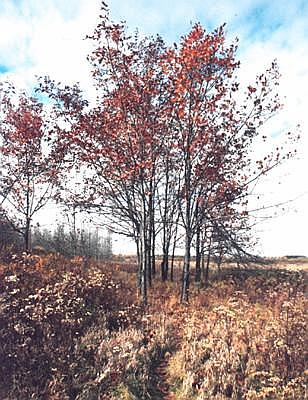
|
| The bur oak here on the clay are growing more evenly than those on the sand of the ridge. This tree displays the ruggedly twiggy form of fine bur oak. | 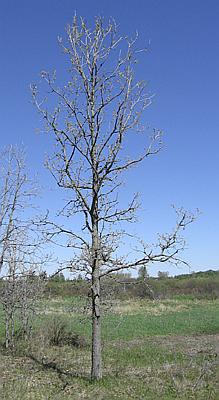
|
176 species of plants have been identified along the trail. There are 19 species of birds that regularly breed there, 10 common mammals and 3 common dragonflies.
Now that you have taken a virtual walk along the trail, I invite you to come for a real visit. It is free, and open year round. (Skis or snowshoes are advisable in winter, rubber boots in early spring or after heavy rain.)